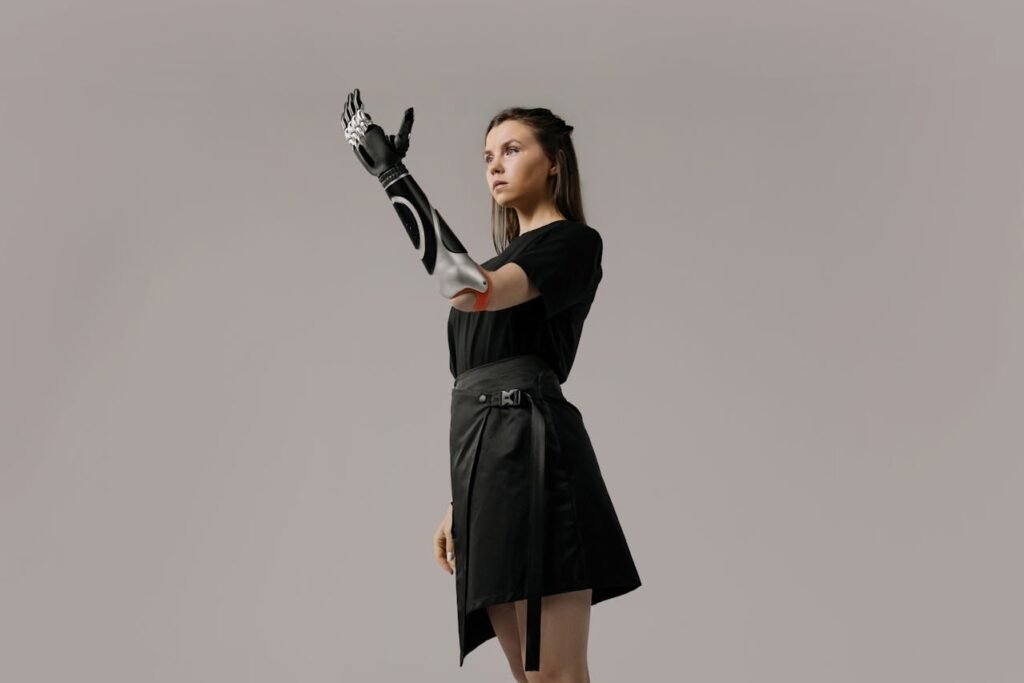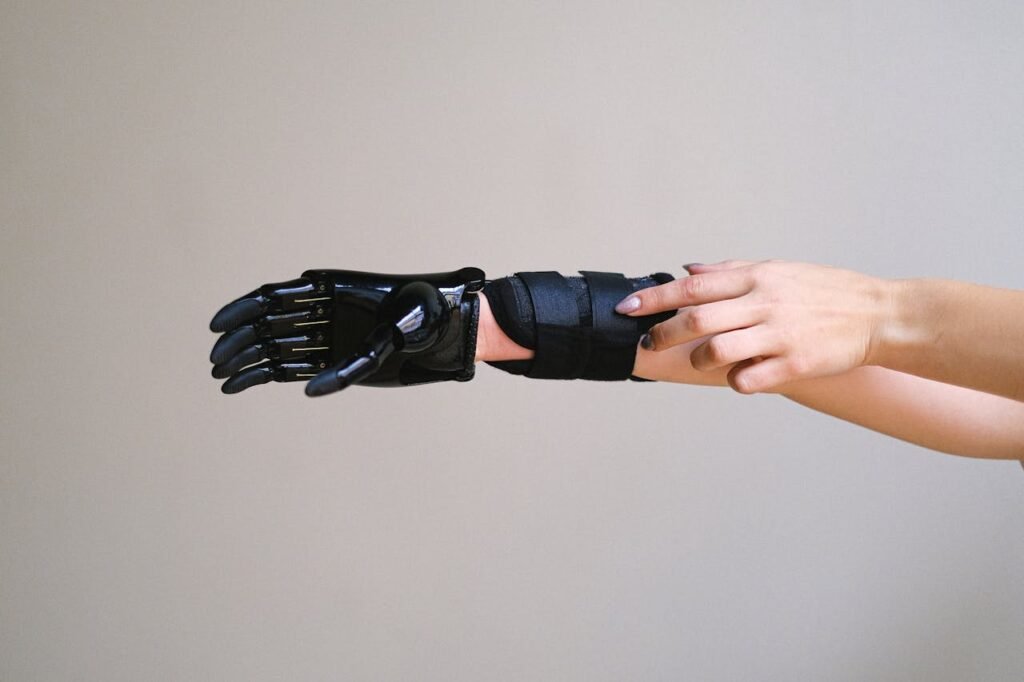For many women, the loss of even a part of the hand can feel deeply personal. Beyond the physical limitation, it touches daily life—how you dress, cook, work, and express yourself. Yet today, prosthetic technology has reached a point where women don’t have to compromise between appearance and ability.
Partial hand prosthetics have evolved from simple cosmetic covers into highly functional tools that restore both confidence and control. Whether you want your hand to look natural or perform precise movements, there are options that match your lifestyle.
In India, more women are now choosing custom prosthetic solutions designed around comfort, beauty, and practical utility. Still, deciding between a cosmetic and a functional prosthetic—or finding the right balance—can be confusing.
This article is your detailed guide to understanding those choices. We’ll explore what each type offers, how to match them to your daily activities, and how to make the best decision for your needs, goals, and comfort.
Understanding Partial Hand Prosthetics for Women in India
What Is a Partial Hand Prosthesis

A partial hand prosthesis is designed for women who have lost fingers or a portion of their hand but still have some remaining movement or wrist control.
Unlike a full prosthetic arm or hand, this type focuses only on replacing or supporting the missing part. It can range from a single finger prosthetic to a multi-finger mechanical hand.
The goal is simple—to help you regain both appearance and everyday function without adding unnecessary weight or bulk.
For many women, this kind of prosthetic becomes a natural extension of their identity—helping them cook, write, hold objects, and interact confidently.
The Growing Need Among Women
In India, the demand for partial hand prosthetics among women has been increasing steadily.
Accidents, infections, and certain medical conditions like diabetes or congenital differences often lead to partial hand loss. For women, especially those balancing home and professional duties, regaining hand use quickly is essential.
More importantly, many women want a prosthetic that not only helps them function but also looks graceful and blends with their natural skin tone.
Prosthetic manufacturers have started recognizing these unique needs, creating designs that prioritize both precision and elegance.
Key Differences Between Partial and Full Prosthetics
A full prosthetic hand replaces the entire limb from the wrist or elbow upward. It often includes complex motor systems and sensors.
In contrast, a partial hand prosthetic focuses only on the missing part—often lighter, simpler, and less expensive.
For women who have retained wrist movement, this allows better control and comfort. It also avoids the need for large straps or heavy motors, making it easier to wear daily.
This targeted design ensures that you only replace what’s necessary, keeping the device practical, discreet, and functional.
Importance of a Gender-Specific Design
Women’s hands differ in structure, size, and proportions from men’s. They tend to have narrower palms, smaller joints, and different aesthetic expectations.
A prosthetic designed without considering these differences can feel bulky or unnatural. That’s why gender-specific fittings are vital.
Female-focused prosthetics prioritize softer socket linings, lighter materials, and more elegant contours. Some models also accommodate jewelry like bangles or rings without discomfort.
This thoughtful customization ensures that every woman feels confident, comfortable, and completely herself.
The Balance Between Appearance and Function
Choosing between cosmetic and functional partial hand prosthetics often comes down to lifestyle.
Some women prioritize appearance—wanting a prosthetic that blends perfectly with their skin tone, allowing them to wear it without drawing attention.
Others need advanced functionality, especially if they’re active professionals, artists, or homemakers who use their hands throughout the day.
The best solutions often find a middle path—offering realistic design with enough flexibility for daily tasks.
That balance depends on your comfort level, personal style, and how you want the prosthetic to support your life.
The Indian Perspective
India’s prosthetic industry has grown rapidly in the last decade. Today, women in both urban and semi-urban areas can access world-class prosthetic care without traveling abroad.
Manufacturers like Robobionics have localized advanced technologies, offering affordable, customized partial hand prosthetics that suit Indian lifestyles.
This shift is important because Indian women often have unique daily routines—from traditional cooking to office work and social gatherings. A prosthetic designed for Western lifestyles may not always meet those needs perfectly.
Local expertise ensures better comfort, realistic appearance, and adaptability to India’s weather and cultural habits.
Cosmetic Partial Hand Prosthetics for Women
The Purpose of Cosmetic Prosthetics

Cosmetic partial hand prosthetics are designed primarily for appearance. They recreate the natural look of your hand—matching skin tone, texture, and proportions—to help you feel confident and comfortable in social and professional settings.
These prosthetics are often made from high-quality silicone or similar materials that closely resemble human skin. For many women, this visual harmony helps restore not just symmetry but also self-assurance.
Although they don’t usually offer motion or grip, cosmetic prosthetics serve an emotional and psychological purpose. They help women feel complete again, reducing self-consciousness in public and personal interactions.
Material and Aesthetic Detailing
Modern silicone technology allows incredible precision in cosmetic design.
Every detail—from skin color to nail shade, wrinkles, and veins—can be custom-created. Skilled prosthetic artists in India can hand-paint and sculpt these prosthetics to match your exact skin tone and texture.
This customization is especially important for women who wear short sleeves, sarees, or blouses that reveal the hands. It ensures the prosthetic looks natural in all lighting conditions, whether indoors or outdoors.
Even the fingernails can be polished, shaped, or tinted to match your natural ones, giving you a consistent, confident appearance.
Lightweight Comfort and Daily Use
Cosmetic prosthetics are lightweight, which makes them easy to wear for long hours.
Women who prefer minimal maintenance often choose these options for daily wear, especially if they want something discreet and simple.
The silicone or polyurethane material used is flexible, allowing smooth contact with the skin and clothing. You can perform light activities like typing, holding papers, or carrying small objects comfortably.
This balance between appearance and limited function makes cosmetic prosthetics ideal for women who value comfort and ease over high mechanical performance.
Durability and Care
With proper care, a cosmetic prosthetic can last several years.
It’s important to clean it regularly with mild soap and water to remove dust, sweat, or makeup residue. Women who apply mehendi or lotion should remove the prosthetic temporarily to avoid staining or material wear.
Avoiding extreme heat, strong chemicals, or rough handling keeps the material looking fresh and lifelike.
Regular maintenance appointments with your prosthetist also help ensure the fit remains perfect and the color does not fade unevenly over time.
Ideal for Social and Cultural Settings
Cosmetic prosthetics are especially popular among Indian women who value aesthetics in social and cultural occasions.
During weddings, festivals, or professional events, many women prefer a hand that looks natural and beautiful even without active movement.
These prosthetics allow for wearing bangles, rings, or traditional jewelry with ease. The design can even be adjusted slightly to fit preferred accessories.
This natural integration with Indian culture and fashion makes cosmetic options a practical choice for those who prioritize elegance and identity.
Confidence and Emotional Healing
The value of cosmetic prosthetics extends far beyond appearance. For many women, wearing a lifelike hand restores self-esteem and confidence in public interactions.
It helps remove the feeling of being “different” or “noticed,” allowing women to focus on their lives, careers, and relationships instead of their prosthetic.
Many users describe it as regaining a part of themselves—a silent but powerful step toward emotional recovery.
This emotional connection makes cosmetic prosthetics more than an accessory—they become a source of quiet strength and self-assurance.
Limitations to Consider
While cosmetic prosthetics excel in appearance, they have limited functionality.
They can’t grip, hold, or move objects actively, and they may require occasional readjustment for comfort. Women who perform tasks requiring frequent hand use—like cooking, typing, or carrying items—may find them restrictive.
However, many women still choose them for daily activities where minimal physical use is required, such as office work, social meetings, or commuting.
Your prosthetist can help assess your needs to determine whether a cosmetic or hybrid design will serve you better.
Hybrid Cosmetic Solutions
Some modern prosthetic designs combine cosmetic appearance with light functionality. These are often called hybrid prosthetics.
They use internal frameworks or passive mechanical joints that allow basic finger movement or object support without motors.
These options work beautifully for women who want a natural look but also wish to perform small actions—like stabilizing objects, supporting handshakes, or carrying a purse.
Hybrid designs are gaining popularity in India because they balance beauty and practicality while remaining affordable and comfortable.
The Role of Customization in Indian Contexts
Indian women often face challenges unique to their lifestyle and clothing preferences.
For example, prosthetics must fit well under saree sleeves, formal blouses, or long kurtas. They must allow the flexibility to wear traditional jewelry or apply mehendi during festivals.
Cosmetic prosthetics can be fully customized to accommodate all of these factors. The wrist angle, glove texture, and nail design can all be adapted to ensure the hand looks natural and feels personal.
This attention to detail helps women integrate their prosthetic seamlessly into their daily lives, without compromise.
Who Should Choose Cosmetic Prosthetics
Cosmetic partial hand prosthetics are best suited for women who:
- Want a visually natural hand.
- Prioritize comfort and appearance over mechanical use.
- Perform light tasks rather than heavy or repetitive ones.
- Need a prosthetic that blends with their style and cultural preferences.
These devices are not meant for those requiring active movement or strong grip. But for emotional reassurance, beauty, and ease, they remain a deeply satisfying choice.
Functional Partial Hand Prosthetics for Women
What Functional Prosthetics Are Designed For

Functional partial hand prosthetics focus on restoring practical movement, strength, and precision.
These prosthetics are designed for women who lead active lives—whether they are professionals, homemakers, artists, or athletes. The purpose is not just to complete the appearance of the hand, but to help you perform day-to-day activities confidently.
With modern advancements, these prosthetics now go far beyond simple mechanics. They can respond to muscle signals, adjust grip pressure, and even assist in delicate tasks like typing, cooking, or handling objects safely.
Types of Functional Partial Hand Prosthetics
There are two main types of functional prosthetics available today: mechanical and myoelectric.
Mechanical prosthetics operate using body movements. For example, when you move your wrist or remaining fingers, the prosthetic responds and performs an action like gripping or releasing an object.
Myoelectric prosthetics, on the other hand, use small electrical signals from your muscles to control movement. Sensors detect muscle contractions and translate them into motion—offering a smoother and more natural experience.
Each type serves different lifestyles, and your prosthetist will help you choose the right one based on your comfort, control, and physical needs.
Mechanical Prosthetics for Everyday Function
Mechanical partial hand prosthetics are often preferred by women who need dependable support for practical daily activities.
They use simple mechanical systems—like hinges, cables, or springs—that respond to body motion. This design gives you strong, direct control without needing any electronics or batteries.
Women often appreciate these for their simplicity, reliability, and easy maintenance. They are ideal for those who perform household chores, light lifting, or outdoor tasks.
Mechanical hands are also lighter than electronic ones, making them comfortable for long wear, even in India’s warmer climates.
Myoelectric Prosthetics for Precision and Ease
Myoelectric prosthetics are more advanced. They detect electrical signals from muscles in your residual hand or forearm, allowing you to move the fingers or thumb naturally.
This technology gives better grip precision and smoother transitions between actions. For example, you can pick up a cup, hold a pen, or use your phone with more control.
Myoelectric prosthetics also offer variable grip strength, making them versatile for women who multitask between professional and personal responsibilities.
While they require battery charging and regular maintenance, the convenience and control they offer are unmatched.
Lightweight and Ergonomic Design
One major improvement in modern functional prosthetics is weight reduction.
Earlier designs were heavy, often causing strain on the shoulder or arm. Now, advanced materials like carbon fiber and lightweight alloys ensure the prosthetic feels natural and effortless.
For women, especially those with smaller hand frames, ergonomics play a crucial role. The socket and finger lengths are designed specifically to balance proportion and strength.
This attention to comfort means the prosthetic becomes a tool that feels like part of your own body rather than an attachment.
Functional Use in Daily Life
Women who use functional partial hand prosthetics quickly learn how adaptable these devices are.
You can cook, open bottles, hold utensils, type on a keyboard, or even do light exercises with the right training.
For mothers or caregivers, these prosthetics make tasks like dressing, feeding, or handling children’s items easier and safer.
The goal is always to regain natural independence—to be able to do things instinctively again, without hesitation or discomfort.
Adapting to Technology with Confidence
While some women may feel intimidated by the idea of using a prosthetic with sensors or motors, the learning process is surprisingly smooth.
During training, prosthetists guide users through simple exercises that help the brain and muscles adapt to the device’s feedback.
Within weeks, most women start performing everyday tasks naturally, without overthinking each motion.
This adaptability shows how intuitive the human body is—and how far technology has come in supporting it.
Maintenance and Lifespan
Functional prosthetics, especially myoelectric types, require regular maintenance to perform well.
Battery charging, calibration, and occasional servicing keep them reliable. It’s also important to keep the socket and liner clean to prevent skin irritation.
Most high-quality prosthetics last between three and five years, depending on usage. Components like batteries or sensors can be replaced when needed without requiring a full refit.
In India, many prosthetic centers now offer annual maintenance packages, making upkeep simple and affordable.
Combining Functionality and Appearance
Today’s functional prosthetics are not just practical—they’re also beautiful.
Women can choose silicone covers that match their skin tone and style preferences. Nail finishes, hand contours, and detailing can all be customized without affecting performance.
This combination allows you to enjoy both visual appeal and functional control. Whether you’re in a formal office setting or at a social event, your prosthetic can blend seamlessly with your appearance.
This dual approach—grace and utility—reflects how modern prosthetics are designed with women’s real lives in mind.
Emotional Empowerment Through Functionality
Regaining functional control is about more than movement—it’s about reclaiming independence.
When women can tie their hair, hold a pen, or cook without help, they experience a powerful emotional shift. The prosthetic becomes a bridge between recovery and self-sufficiency.
This sense of autonomy builds confidence and reduces dependence, creating a more active and fulfilling lifestyle.
Many women describe this moment as transformative—the instant they realize that their prosthetic isn’t a replacement but an enhancement of who they already are.
Who Should Choose Functional Prosthetics
Functional prosthetics are ideal for women who:
- Lead active lifestyles and require hand use throughout the day.
- Want to perform a variety of practical tasks with ease.
- Are open to a short training period for adaptation.
- Prefer mobility and grip over purely cosmetic design.
These devices help women return to work, maintain fitness, and continue engaging fully with their families and communities.
Choosing Between Cosmetic and Functional Partial Hand Solutions
The Decision Starts With Your Lifestyle

The choice between cosmetic and functional prosthetics is deeply personal. It depends on how you live, what activities you perform daily, and how important appearance and practicality are to you.
If your daily routine involves more social interaction and light hand use, a cosmetic prosthetic may meet your needs beautifully. But if your routine involves frequent physical activity, work-related tasks, or handling objects, functionality may matter more.
Your prosthetist will help you evaluate both aspects—what looks best and what works best—so your prosthetic feels natural to your routine and identity.
Understanding Your Goals
Before you choose, it’s important to ask yourself what your goals are.
Do you want your hand to look as natural as possible? Or do you want to regain strength and movement?
Some women aim for confidence in appearance; others prioritize practical recovery and autonomy. Many fall somewhere in between—wanting something that looks real but also lets them function effectively.
Clarity about your expectations will guide your prosthetist in recommending the right materials, technology, and design.
When to Choose Cosmetic Prosthetics
A cosmetic prosthetic is ideal for women who value aesthetics and simplicity.
If you work in an office, travel frequently, or attend public or social events where appearance matters, a silicone cosmetic hand can provide quiet confidence and elegance.
It requires little maintenance, no battery charging, and minimal adjustments. You can wear it all day without fatigue or discomfort.
Women who prefer traditional clothing, jewelry, or light manual work often find these designs more practical for their lifestyle.
When to Choose Functional Prosthetics
Functional prosthetics are suited for women who rely on their hands for activity and control.
If you handle tools, type often, work in a creative or physical profession, or simply want to regain strong everyday independence, a functional prosthetic can help.
These hands allow you to grip, move, and lift objects safely, which can make household or professional work much easier.
The initial learning curve is small, and most women adjust quickly with guidance from their prosthetist. Over time, the movements become instinctive and empowering.
Considering Hybrid or Dual Solutions
For some women, the perfect solution lies in between—a hybrid approach.
You can have two prosthetics: a cosmetic one for social use and a functional one for active days or work. This combination allows flexibility and comfort across different occasions.
For instance, a woman might wear her functional hand during work hours and switch to her cosmetic hand for an evening event.
Hybrid solutions ensure that you never feel restricted by your prosthetic choice. You can adapt it to your schedule, outfit, and environment with ease.
Comfort and Socket Fit
Regardless of whether you choose a cosmetic or functional hand, comfort begins with a perfect socket fit.
The socket is the foundation of every prosthetic. It connects your natural limb with the device and determines how secure and natural it feels.
Women often need specialized socket designs that account for smaller hand frames, softer skin, and lighter pressure points.
During fitting, your prosthetist will check alignment, padding, and liner materials carefully. A good socket ensures you can wear your prosthetic all day without irritation or fatigue.
The Role of Aesthetics in Decision-Making
Appearance plays an important role in how women connect with their prosthetics.
A natural-looking hand can help you feel more at ease in public, making social interactions smoother. Skin tone matching, nail design, and overall shape all contribute to how confident you feel.
For many women, this visual comfort is as healing as the functional aspect. It allows you to feel fully yourself again—not defined by the prosthetic, but supported by it.
Aesthetic design is no longer limited to cosmetic prosthetics—functional ones can also be customized with lifelike silicone covers.
Adapting to a Functional Device
Learning to use a functional prosthetic takes patience and gentle practice.
In the beginning, your movements may feel mechanical, but with training, they become smoother. Rehabilitation programs focus on strengthening muscles, improving coordination, and building intuitive control.
Most women start performing light activities within weeks and gradually progress to more complex tasks like holding utensils, writing, or styling hair.
The goal of this process is independence—not just in function but in mindset. It helps you trust your prosthetic and your body again.
Emotional Readiness and Confidence
Choosing a prosthetic isn’t only a physical decision—it’s emotional.
You may go through moments of hesitation or self-doubt, wondering how others will perceive your new hand. This is completely natural.
What matters most is understanding that a prosthetic is not about replacing something—it’s about reclaiming your life.
The right prosthetic hand, whether cosmetic or functional, gives you the confidence to do more, be more, and live freely again.
Women who embrace their prosthetic as part of their identity often find that it empowers them far beyond the physical aspect.
Maintenance and Longevity
Both cosmetic and functional prosthetics last several years with proper care.
Cosmetic silicone hands require cleaning and occasional color restoration. Functional prosthetics, particularly myoelectric types, need battery charging and routine service checks.
Modern prosthetic centers in India, including Robobionics, offer aftercare packages and on-call maintenance to keep your device in perfect condition.
Choosing a provider who offers consistent support ensures peace of mind and long-term satisfaction.
Budget and Financing Options
Cost can be a significant factor in your decision. Cosmetic prosthetics are generally more affordable, while functional or myoelectric models are more expensive due to technology and materials.
However, flexible EMI and financing programs are now widely available. Some government programs and private insurance plans also cover prosthetic fittings, especially if they’re medically necessary.
It’s important to discuss financial options during your consultation so you can choose a plan that fits your comfort and capability.
Social and Cultural Acceptance
In India, awareness about prosthetic technology is growing, and social perceptions are changing positively.
Women who once felt hesitant about wearing a visible prosthetic now find acceptance in workplaces, communities, and public spaces.
Media, advocacy groups, and inclusive campaigns have helped normalize prosthetic use. The focus today is on empowerment—how these devices enhance life, not how they replace something missing.
This cultural shift has encouraged more women to seek both functional and aesthetic prosthetics confidently.
The Importance of Consultation and Trial
No two women have the same physical structure or emotional comfort level. That’s why consulting a professional prosthetist is crucial.
A trial fitting helps you experience both cosmetic and functional options firsthand. You can see how each feels, moves, and looks on your body before making a decision.
This personalized approach removes uncertainty and allows you to make an informed, confident choice.
The right prosthetic is the one that makes you forget you’re even wearing it—because it feels like a natural part of you.
Robobionics’ Approach to Women’s Partial Hand Solutions
At Robobionics, every prosthetic is designed to fit your individuality.
Our team focuses on blending technology with empathy. We understand that every woman’s goals are different—some want elegance, others want power, and many want both.
We use advanced scanning, lightweight materials, and realistic finishing to ensure your prosthetic complements your lifestyle perfectly.
Our fittings also include counseling, physiotherapy, and aftercare support, so you feel guided throughout your entire journey.
Whether you choose a cosmetic hand that mirrors your grace or a functional one that enhances your ability, our goal is to make you feel whole, independent, and confident.
Final Thoughts
Your prosthetic hand is more than a medical device—it’s a part of your identity, strength, and freedom.
Choosing between cosmetic and functional solutions isn’t about what’s better in general—it’s about what’s better for you.
Take time to reflect on your daily needs, your priorities, and your dreams. Then make your choice based on what brings you comfort, control, and confidence.
In the end, the best prosthetic hand is the one that helps you live the life you love—beautifully, powerfully, and without limits.



